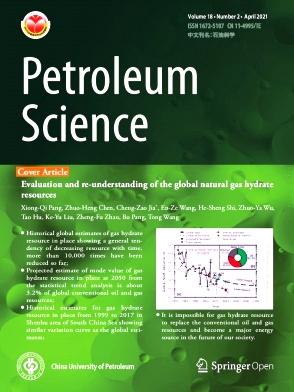Tectonics of the West and Central African strike-slip rift system
IF 6
1区 工程技术
Q2 ENERGY & FUELS
引用次数: 0
Abstract
It is essential to intensify research on the strike-slip tectonic system in West and Central Africa to better understand regional tectonic evolution and achieve future breakthroughs in oil and gas exploration. Based on the structural interpretation of extensive seismic data and stratigraphic paleontological analysis of more than 50 wells, this study investigated the tectonic history, sedimentary filling, and evolution of the rift basins in the West and Central Africa, and identified a novel type of intraplate strike-slip tectonic system. It exhibits the following characteristics: (i) the strike-slip tectonic system in the West and Central Africa consists of the Central African Shear Zone (CASZ) and two rift branches, manifesting as an N-shape; (ii) most of basins and rifts are characterized by rapid subsidence at one end and substantial sedimentary thickness; (iii) two types of strike-slip basins are developed, namely the transform-normal extensional basin (TEB) along CASZ and the strike-slip-induced extensional basin (SEB) at each end of CASZ; (iv) two types of basins display their own temporal and spatial evolution history. TEBs underwent two rifting stages during the Early and Late Cretaceous, with a strong inversion at the end of the Late Cretaceous. SEBs experienced three rifting stages, i.e., the Early Cretaceous, Late Cretaceous, and Paleogene, with a weak inversion; and (v) this strike-slip tectonic system was formed under intraplate divergent field, indicating a new type of system. This discovery enhances understanding of the breakup of Gondwana and provides valuable guidance for future oil and gas exploration.
求助全文
约1分钟内获得全文
求助全文
来源期刊

Petroleum Science
地学-地球化学与地球物理
CiteScore
7.70
自引率
16.10%
发文量
311
审稿时长
63 days
期刊介绍:
Petroleum Science is the only English journal in China on petroleum science and technology that is intended for professionals engaged in petroleum science research and technical applications all over the world, as well as the managerial personnel of oil companies. It covers petroleum geology, petroleum geophysics, petroleum engineering, petrochemistry & chemical engineering, petroleum mechanics, and economic management. It aims to introduce the latest results in oil industry research in China, promote cooperation in petroleum science research between China and the rest of the world, and build a bridge for scientific communication between China and the world.
 求助内容:
求助内容: 应助结果提醒方式:
应助结果提醒方式:


